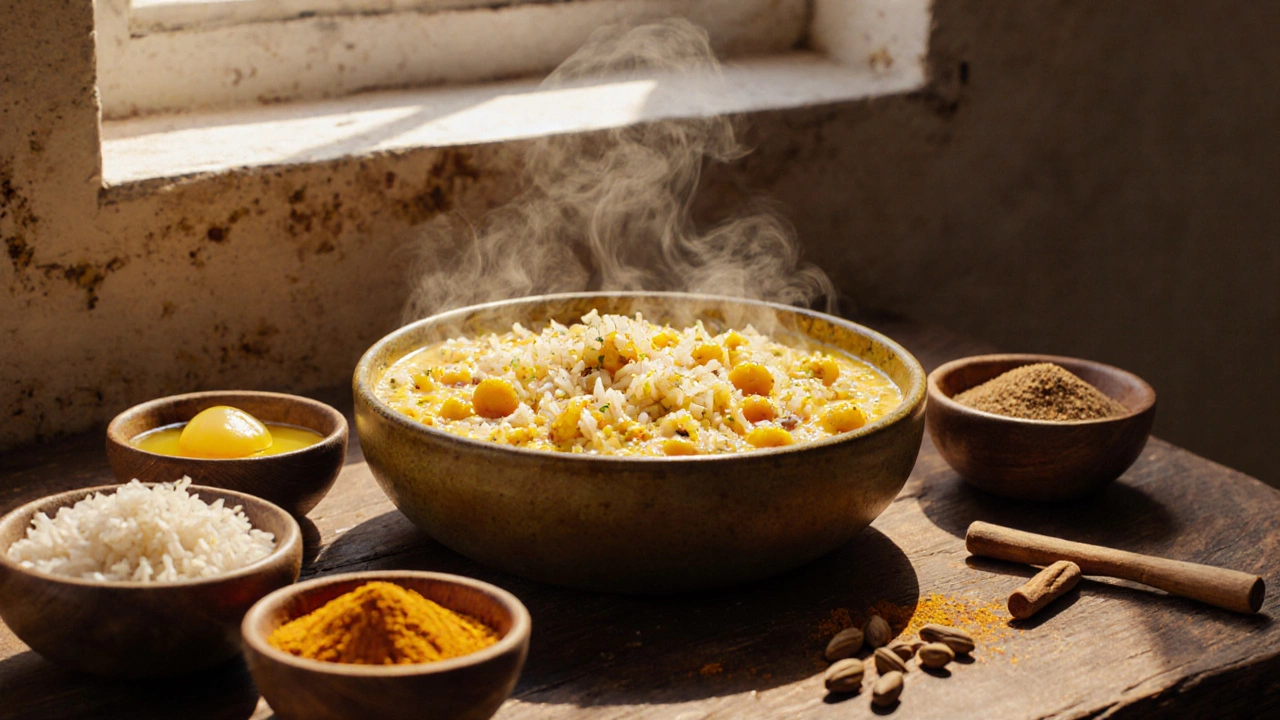Khichdi Recipe – The Ultimate Comfort Food Guide
When working with Khichdi, a simple one‑pot blend of rice and lentils cooked with mild spices, often called the Indian comfort bowl. Also known as khichri, it offers a balanced mix of carbs, protein, and soothing flavors, you instantly get a dish that’s both filling and easy on the stomach. Looking for a khichdi recipe that fits your schedule? You’ve come to the right place.
At its core, Rice, the starchy backbone meets Dal, a lentil or pulse that supplies protein. This combo creates a complete protein source, making khichdi a smart choice for vegetarians and anyone chasing a balanced meal. The mild spice blend keeps the dish gentle enough for kids, seniors, and even those recovering from illness. Because it’s low in fat and high in fiber, khichdi supports steady blood sugar and promotes good digestion.
Why Khichdi Works: Ingredients, Variations & Flavor
Beyond rice and dal, the magic comes from Spices, tiny flavor powerhouses like turmeric, cumin, and mustard seeds. These spices not only add aroma but also bring anti‑inflammatory properties. A basic khichdi uses turmeric for its golden hue and health boost, while cumin and mustard seeds give a subtle bite. Want more veggies? Toss in carrots, peas, or spinach during the final simmer – the vegetables blend into the porridge, making the dish richer without overwhelming the gentle base.
Khichdi embraces countless regional twists. In the west, people swap white basmati for brown rice or quinoa for extra fiber. In the south, they replace moong dal with masoor or even add coconut milk for a creamy texture. Each variation still follows the same principle: a single pot, minimal fuss, and a comforting result. This flexibility is why khichdi is a staple in Indian households and a favorite among health‑focused cooks worldwide.
Cooking‑wise, the key is the right water‑to‑grain ratio. Too much liquid, and you end up with a soupy stew; too little, and the grains stay hard. A good rule of thumb is 1 cup rice : 1 cup dal : 4–5 cups water, adjusted for the type of dal you use. Start by sautéing the spices in ghee or oil, then add washed rice and dal, pour in the water, and let it simmer until everything is tender. For a pressure‑cooker shortcut, lock the lid for 3 whistles on medium heat – you’ll have fluffy khichdi in minutes.
Beyond the kitchen, khichdi carries cultural weight. It’s often served during festivals, post‑natal meals, and as a soothing dish for the sick. Its simplicity makes it a symbol of hospitality and care in many Indian families. When you serve khichdi, you’re not just offering food; you’re sharing a piece of tradition that says “welcome home.”
If you’re short on time, the “quick khichdi” method works wonders. Use pre‑soaked rice and dal, a pinch of ready‑made spice mix, and a microwave‑safe bowl. Cook on high for 8‑10 minutes, stir, and let it rest for a couple of minutes – you’ll have a warm bowl ready for a busy weekday. Batch‑cook a large pot on the weekend, store portions in the fridge, and reheat whenever you crave comfort without the hassle.
All these tips, tricks, and variations set the stage for the deeper dives below. In the articles that follow, you’ll explore everything from nutritional breakdowns to regional twists, smart cooking hacks, and even how khichdi compares to other one‑pot meals. Dive in to expand your khichdi repertoire and make every bowl a delicious, nourishing experience.
What’s the Mildest Indian Dish? Discover the Gentle Flavors of Khichdi
Discover why Khichdi is the mildest Indian dish, learn an easy recipe, compare low‑heat options, and get tips for reducing spice in Indian cooking.
